Browse Items (1611 total)
| Thumbnail | Title | Description | Date | Date Added |
|---|---|---|---|---|
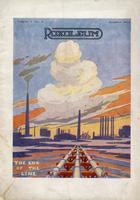 |
"Roxoleum" The Roxana Petroleum Company Magazine from October 1918 | This issue, “The End of the Line,” Volume I No. X, was published in October 1918. “Roxoleum”, the company publication of Roxana Petroleum Corporation, was a series of magazines published over the course of three years, starting during WWI as a link between the company and service members. This monthly magazine was named “Dawn” and underwent a name change in 1918. The magazine features poems, cartoons, short stories, company information, letters from soldiers, photos, celebrations, pictorials of employees who are service members, and much more. The information was largely contributed by employees and staff members. In the last issue of the magazine the President van der Gracht stated, “We have been feeling, of late, that ‘Roxoleum,’ which was created as a special periodical for times of unusual disturbance, and as a tie between the staff at home and our boys at the battle front or in the training camps, has now fulfilled its purpose and that we can lay it to rest with this issue.” | October 1918 | November 6, 2017 |
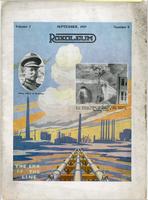 |
"Roxoleum" The Roxana Petroleum Company Magazine from September 1919 | This issue, “The End of the Line,” Volume 2 Number 9, was published in September 1919. “Roxoleum”, the company publication of Roxana Petroleum Corporation, was a series of magazines published over the course of three years, starting during WWI as a link between the company and service members. This monthly magazine was named “Dawn” and underwent a name change in 1918. The magazine features poems, cartoons, short stories, company information, letters from soldiers, photos, celebrations, pictorials of employees who are service members, and much more. The information was largely contributed by employees and staff members. In the last issue of the magazine the President van der Gracht stated, “We have been feeling, of late, that ‘Roxoleum,’ which was created as a special periodical for times of unusual disturbance, and as a tie between the staff at home and our boys at the battle front or in the training camps, has now fulfilled its purpose and that we can lay it to rest with this issue.” | September 1919 | November 17, 2017 |
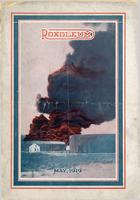 |
"Roxoleum" The Roxana Petroleum Magazine from May 1919 | This untitled issue was published in May 1919. “Roxoleum”, the company publication of Roxana Petroleum Corporation, was a series of magazines published over the course of three years, starting during WWI as a link between the company and service members. This monthly magazine was named “Dawn” and underwent a name change in 1918. The magazine features poems, cartoons, short stories, company information, letters from soldiers, photos, celebrations, pictorials of employees who are service members, and much more. The information was largely contributed by employees and staff members. In the last issue of the magazine the President van der Gracht stated, “We have been feeling, of late, that ‘Roxoleum,’ which was created as a special periodical for times of unusual disturbance, and as a tie between the staff at home and our boys at the battle front or in the training camps, has now fulfilled its purpose and that we can lay it to rest with this issue.” | May 1919 | November 6, 2017 |
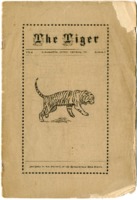 |
"The Tiger, vol 2" Student Publication of Edwardsville High School from December 1911 | "The Tiger, vol. 2" Student Publication of Edwardsville High School from December 1911. This issue contains current events, athletic events, and literary stories and poems written by students. | December 1911 | April 10, 2018 |
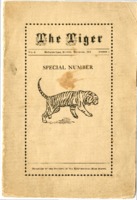 |
"The Tiger, vol. 1" Student Publication of Edwardsville High School from November 1911 | "The Tiger, vol. 1" Student Publication of Edwardsville High School from December 1911. This issue contains current events, athletic events, and literary stories and poems written by students. | November 1911 | April 5, 2018 |
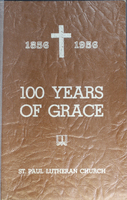 |
100 Years of Grace: St. Paul Lutheran Church 1956 Centennial History Book | This book was created in 1956 to celebrate centennial anniversary of St. Paul Lutheran Church located in Hamel, Illinois. The centennial anniversary was celebrated on October 21, 1956. Included in this book are a brief history of the church, various pictures from the church's history, and a list of all the members of the church in 1956. | 1956 | April 11, 2019 |
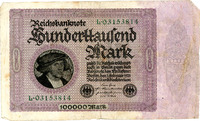 |
100,000 Reichsbank Mark from German Depression | This German Reichsbank Mark is an example of the currency issued following the German Depression Following World War I, which resulted in massive amounts of hyperinflation. The inflation began in 1914 and ended in 1923. The currency was completely revamped at the end of 1923 with the creation of the currency of the Retenmark. The Retenmark was later replaced in 1924 by the Reichsmark. This bill was brought in by Erik Petersen as a part of a Madison Historical class visit to Liberty Middle School in February 2020. |
1923 - 1924 | March 4, 2020 |
 |
11 Future Farmers of America Pin Awards Given to Edwardsville Resident Kenneth Linkeman in the early 1960s | These 11 Future Farmers of America pins were awarded to Edwardsville resident Kenneth Linkeman, who was the president of the Edwardsville chapter of the Illinois FFA. There is one pin for public speaking, one for soybeans, one for Chapter Star Farmer, three for small grains, and five that just have the FFA emblem. These pins were scanned as part of a Madison Historical class visit to Civic Memorial High School in spring 2019. They were brought to class by Kenneth Linkeman's grandson, Keaton Linkeman. |
Circa 1960s | May 21, 2019 |
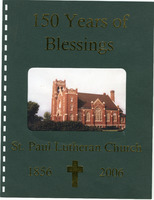 |
150 Years of Blessings: St. Paul Lutheran Church 2006 Sesquicentennial History Book | This book was created in 2006 to celebrate 150th anniversary of St. Paul Lutheran Church located in Hamel, Illinois. The sesquicentennial anniversary was celebrated in October of 2006. Included in this book are a brief history of the church through 2006 and many images from its history. | 2006 | April 11, 2019 |
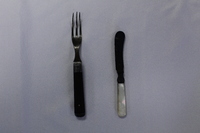 |
1800s to 1910s, Highland, Illinois; old silverware | This is a fork and knife that belonged to a woman named Eileen Kolnsberg. This cutlery set was used in the late 1800's and early 1910's by Kolnsberg's family when she was a little girl. The three-pronged fork was used to to flip meat was cooked for her family, and friends, while the knife was used to spread butter. The Kolnsberg family moved from Monticello, Illinois to Highland, Illinois in the early 1950s. Since the death of Eileen, the pair has not been in use. This set of cutlery was photographed as a part of a Madison Historical class visit to Liberty Middle School in February 2020. It was brought to class by Olivia Kolnsberg. |
1890 - 1930 | March 4, 2020 |
